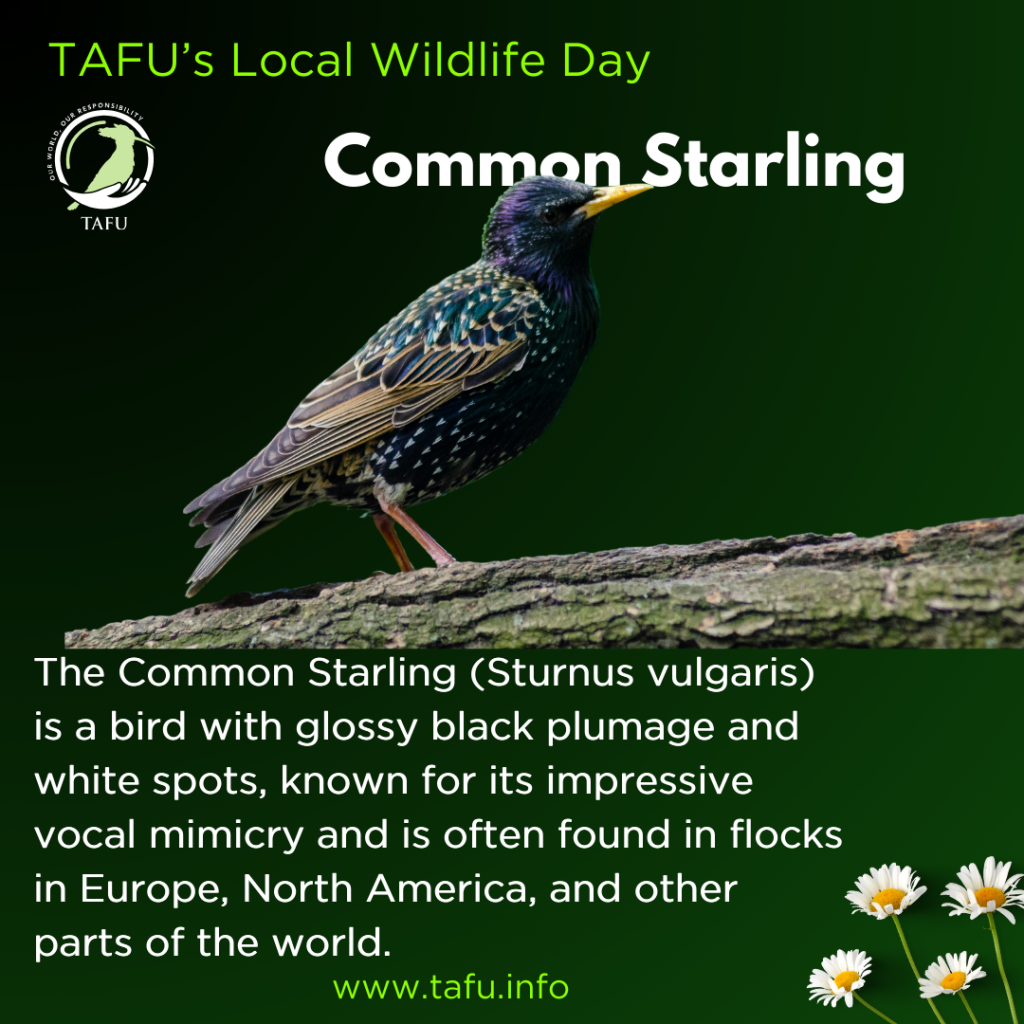Common Starling
As part of the countdown to TAFU’s Local Wildlife Day on the 11th of July – Species no. 15.
Stay tuned – 28 more days and 28 more species until then!
The Common Starling (Sturnus vulgaris) is a medium-sized bird measuring about 20 cm in length, characterised by its glossy black plumage with a metallic sheen and white spots. Its bill is yellow in summer and black in winter. They are native to Europe, North Africa, and parts of Asia, and have been introduced to North America, Australia, New Zealand, and other areas, where they have thrived and often become invasive.
Starlings are highly social birds, often forming large, noisy flocks. They are excellent mimics, capable of imitating the calls of other bird species and even mechanical sounds. Their diet is omnivorous, consisting of insects, fruits, and seeds. Starlings forage on the ground, moving in a characteristic zig-zag pattern as they search for food.
Breeding typically occurs in cavities where they build untidy nests. Females lay 4-6 pale blue eggs, which hatch after about two weeks. The chicks fledge around three weeks later. Starlings can have multiple broods in a year, contributing to their rapid population growth.
They are renowned for their spectacular flight displays known as murmurations. These aerial performances are mesmerising and involve thousands of starlings swooping and diving in unison, creating intricate, ever-changing shapes. Murmurations are thought to serve predominantly to deter predators and confuse them.
The synchronised movement of each bird, responding almost instantaneously to its neighbours, just showcases their incredible coordination. These displays are not only a stunning natural spectacle but also a fascinating example of collective animal behaviour.
Despite being considered pests in some regions due to their large numbers and some say aggressive behaviour (though we’ve never witnessed it), starlings play a role in controlling insect populations. However, their populations have declined in parts of Europe due to habitat loss and changes in agricultural practices. Hence, it is important that we try to keep their habitats as natural as possible to provide nesting and feeding grounds.

